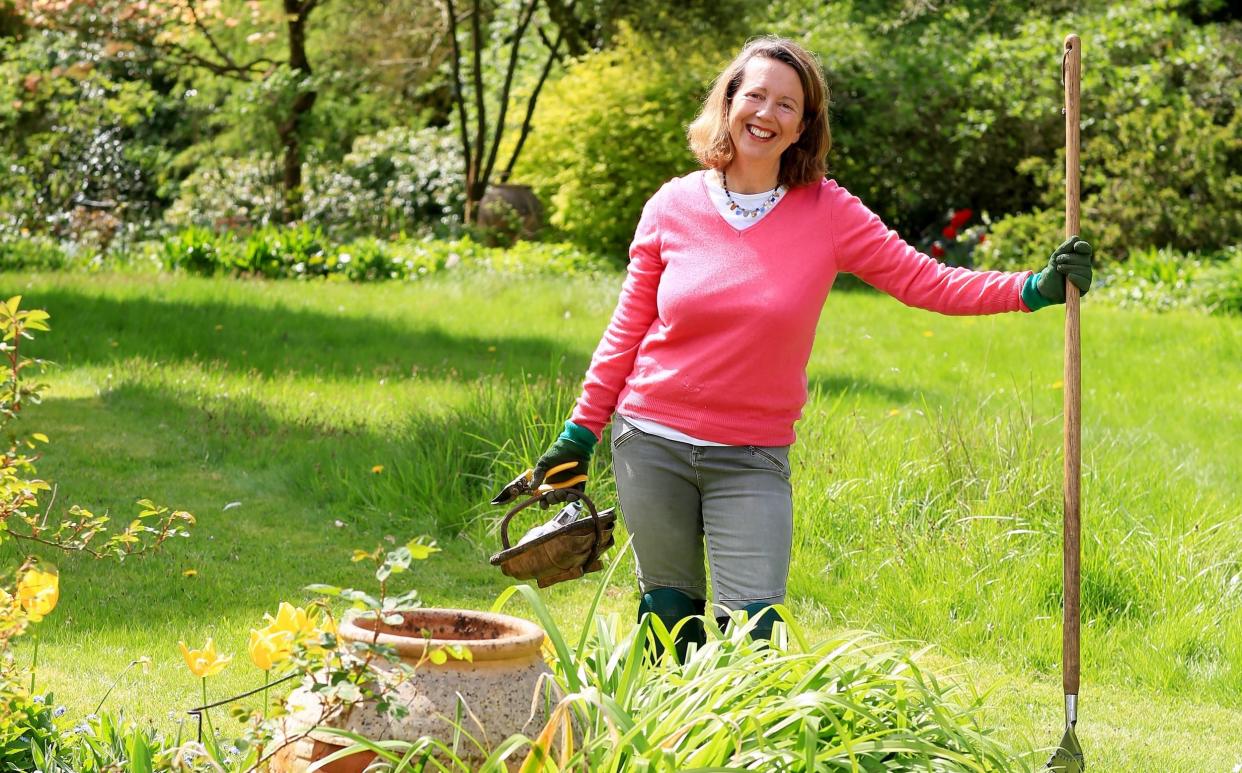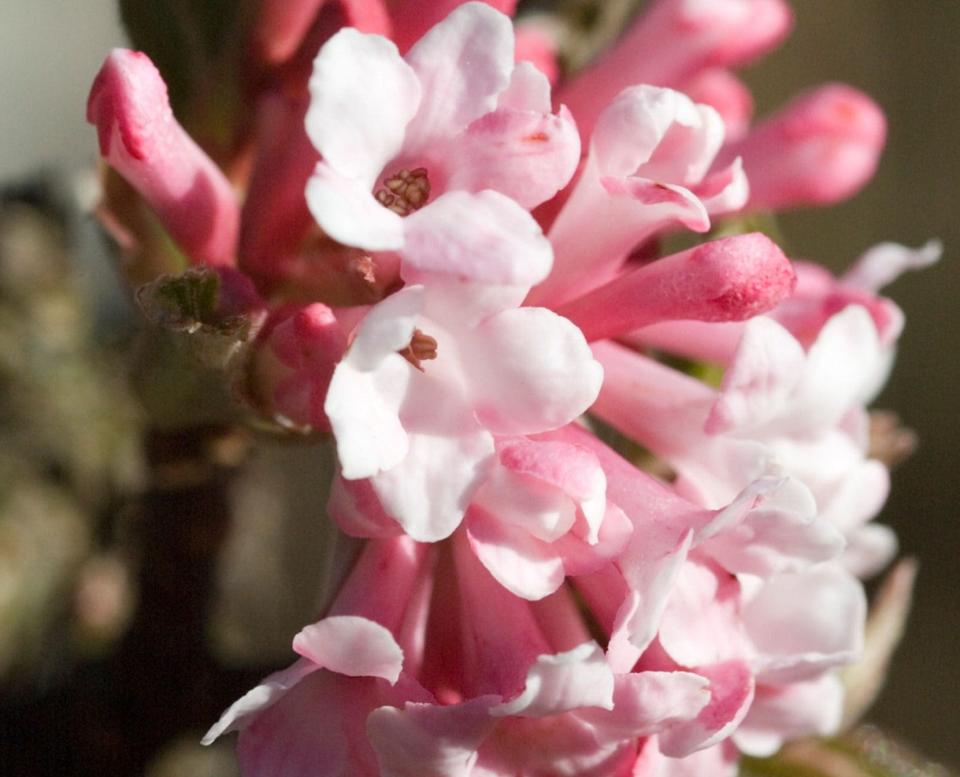Rewilding my garden brought me closer to my dead father

When Annabel Christie swapped a courtyard garden in London for a rambling cottage garden in Oxfordshire with rose beds and borders, she did what any sensible person with a job and young children would do: grassed it over. “It was wonderfully wild, but I was desperate to make it manageable and convenient,” explains Christie, a journalist and author. “I took out hedges, removed a pond and laid grass for a football pitch – I became spectacularly good at growing grass.”
Her father, a keen naturalist, kept his mouth shut as she sprayed pesticides on the weeds on the drive and cleared ivy and nettles from the borders and banks. It obviously troubled him greatly, though, as after he died Christie found a letter tucked into his copy of Natural History of British Butterflies, urging her to start putting nature first. “I was filled with remorse,” she says. “I’d grown up in a beautiful garden surrounded by wildlife – how had I become so disconnected?”
The question forced her to rethink her approach entirely and inspired her memoir, The Guilty Gardener, which is proving to be a word-of-mouth hit. As she researched how to make her garden more wildlife-friendly, she was horrified to learn that the UK’s native species of moth, bumblebee and butterfly are all in decline. “The changes I’d made in the name of convenience suddenly seemed short-sighted and selfish,” she says. “Around 97 per cent of wildflower meadows have disappeared since 1930. My father had always taken a nature-first attitude and I resolved to do the same.”

The Guilty Gardener documents her garden’s evolution from manicured lawns to a mini nature reserve. Christie initially feared it might be a case of too little, too late – some of her father’s favourite birds, including the skylark, turtle dove and the nightingale, are endangered in the UK today – but when she consulted her elderly neighbour Ron, also a naturalist, he assured her that her mistakes can be remedied. “Don’t worry, it will come back,” he told her. “That’s the beauty of nature. It has a wonderful capacity to regenerate itself,” she says.
Ron’s garden buzzes and hums with pollinators, just as hers did when she bought the house. “You just need to stop gardening and let nature do the rest,” Ron told her. But Christie wanted to do more than just leave the ivy, brambles and thistles to run wild; she drew up a wilding manifesto, which included putting up bird feeders, rebuilding the compost heap, stocking the remaining herbaceous borders with wildlife-friendly plants, planting new woodland and reinstating the pond she ripped out when she first arrived.
None of these changes was particularly expensive or laborious. Christie’s mother, a former model who used to mow the lawn in a mini skirt and knee-highs, despairs that her daughter is letting her orderly garden run wild, but within just a few days there are lapwings on the bird feeders. “Ron was right – it’s amazing how quickly nature returns,” Christie says.
“Once I stopped mowing, the grass soon started naturalising and the following summer there were wildflowers in the meadow I created. Now we have different varieties of moths, butterflies and bumblebees.”
When green alkanet began to take over one corner of the garden, Christie feared the whole plot might get overrun by a small number of dominant species, but this hasn’t happened. “The following year there was less alkanet and more wild hogweed – nature seems to sort itself out,” she says. Similarly, the openings Ron encouraged her to make in the fences and hedges to allow wildlife to pass through to find food, mates and tend their young, have not led to a vermin infestation. “We see rabbits, foxes and badgers, and I’m sure we have rats running around, but I don’t worry anymore – they’re not destroying the place,” she says. Christie has even grown to love the weeds poking up through the lawn and beds. “Most people would think there is too much buttercup and dandelion in the grass, but I like the carpet of yellow – and the bees and moths adore them,” she says.
Most profound, however, has been the change in herself. The more time she spent nurturing and documenting the plants and wildlife in her garden, the closer she felt to her late father. Her memoir is a sequel to the nature diaries she kept as a young girl, when she would follow her father around the garden, stacking logs for insects and recording the prickly forms of hedgehogs emerging onto the lawn at twilight. “It was affirming to realise that the child in me is still alive; she just went underground for 40 years,” she says.

Nature was already in decline back then, which was a source of sadness to her father. “He once called me into his study and explained that lepidoptera numbers were down again; he blamed the harmful pesticides farmers were putting on their crops,” Christie says.
Given she knew this, she finds it baffling that she ever lost touch with nature, but it’s what can happen when you leave home and start university, she says. Since writing The Guilty Gardener, she’s heard from others who have experienced a similar disconnection from the landscape they loved as a child – and are now desperate to make amends. “I used to take guests into the garden to admire the lawn; now I take them to the meadow,” she says. “When they see that it’s shining with glow worms, I feel much more proud.”
She’s relieved that her own two children, now in their 20s, are concerned about protecting wildlife and highlighting nature, too. “They’re part of a generation brought up with the reality of climate change – they know how important it is to prioritise wildlife and habitats,” she says.
Sadly Ron died while she was in the midst of implementing her rewilding manifesto, but his friendship and guidance demonstrated how gardening can bring together communities. She’s since become part of her local gardening group and Wildlife Trust. “Everyone should ask their neighbours for advice; seven out of eight people in this country have a garden or balcony, which means there is a lot of untapped knowledge out there,” she says.
Her rewilded garden might not be neat and manicured, but already this summer there are more butterflies and bees than before. “Since encouraging holly and ivy back into the garden I’ve seen the small, dainty holly blue on a regular basis,” she says. “And our uncut lawn is a field of sun-kissed buttercup, red clover, sky blue speedwell and white chickweed, while the wildflowers in our cottage borders are an eruption of colour.”
There are rare orchids in the long grass and a family of green woodpeckers searching for grub in the dense undergrowth; this summer she’s installing a larger pond – 70 per cent of ponds have disappeared from the UK countryside since the beginning of the 19th century yet they are hugely beneficial to a garden’s fragile ecosystem, encouraging more insects and birds. “The sound of birdsong in the morning is so loud at times that it completely drowns out the drone of traffic and the rumble of trains in the valley,” she says.
If there’s one highlight, though, it’s the grace of goldfinches she recently spotted devouring a clump of dandelion seeds on her driveway. “These were weeds I would have happily disposed of before,” she says. “Rewilding has repurposed my life; it’s impossible not to feel inspired when you see the difference you’re making to nature.”
Plants for wildlife and pollinators
Summer-flowering
Geranium ‘Rozanne’ (Cranesbill)

Lavandula angustifolia (English lavender)

Autumn-flowering
Sedum ‘Herbstfreude’ (Autumn joy)

Cyclamen hederifolium (ivy-leaved) and Crocus speciosus

Winter-flowering
Iris unguicularis (Algerian iris)

Viburnum x bodnantense ‘Dawn’

Spring-flowering
Magnolia stellata

Allium ‘Globemaster’, bluebell, narcissus, tulip and hyacinth

‘The Guilty Gardener’, by Annabel Christie (£14.99, Troubador Publishing), is out now


